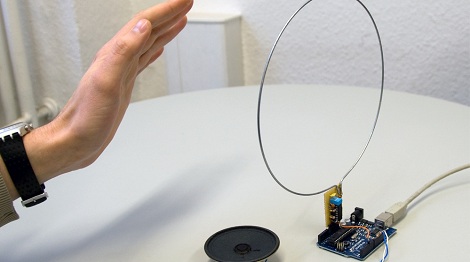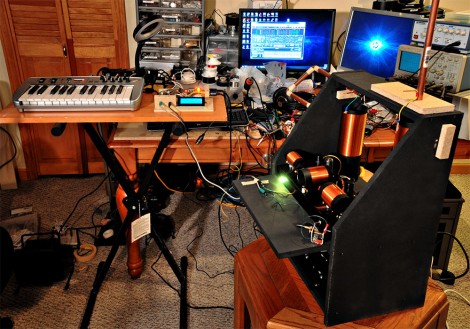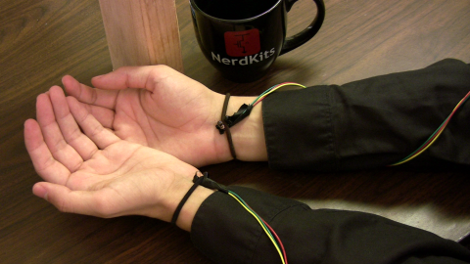
[Martin] sent in a great guide to a simple Arduino based theremin. It’s a very small build – just a single common IC and some passive components – and easy enough to build in an afternoon.
The theremin is based on a simple LC oscillator built around a 7400 quad NAND gate IC, a wire antenna, and a few caps and resistors. When a hand moves closer to the antenna, the frequency of the oscillator increases; when a hand moves away, the frequency decreases. On the software side, the oscillator is connected to the internal hardware counter of the Arduino. Every time there’s a change in the voltage output by the oscillator (all the time, varying slightly with the distance from a hand to the antenna), the counter increases by one. This counter is tallied up over 1/10th of a second, and the distance from the instrumentalist to the theremin can be determined. From there, it’s just outputting a frequency to a speaker.
All the code, schematics, and board layouts are available on [Martin]’s guide, and most of our readers probably have the parts to build this lying around their workbench. You can check out a video of [Martin]’s theremin in action on his guide.
















